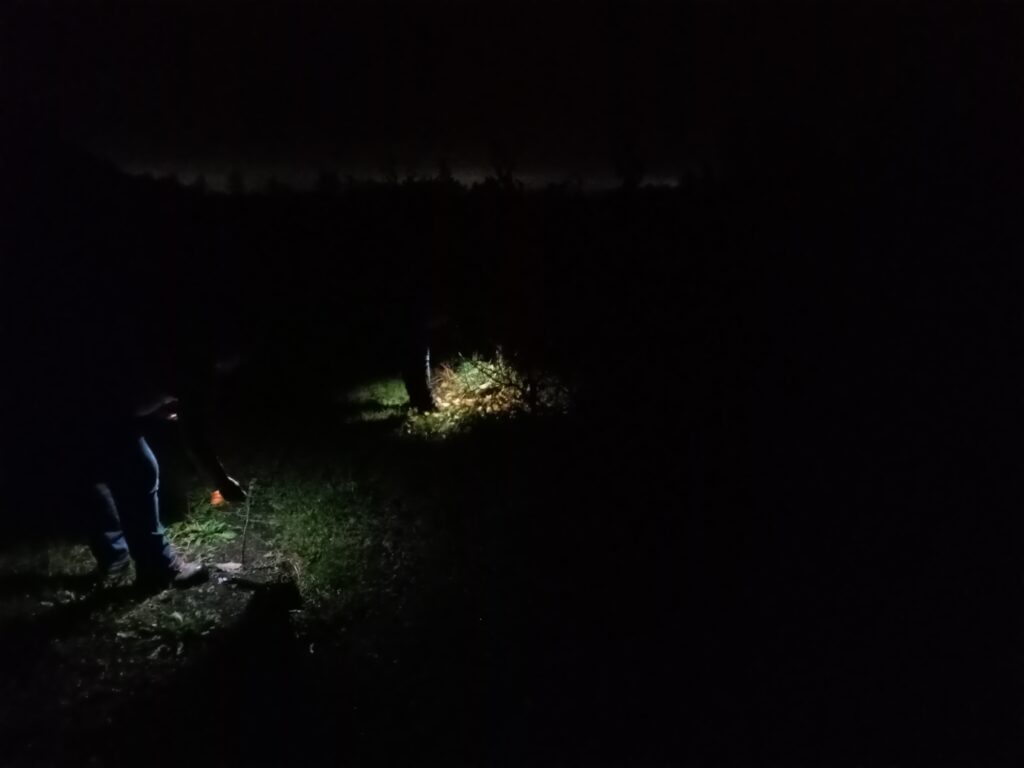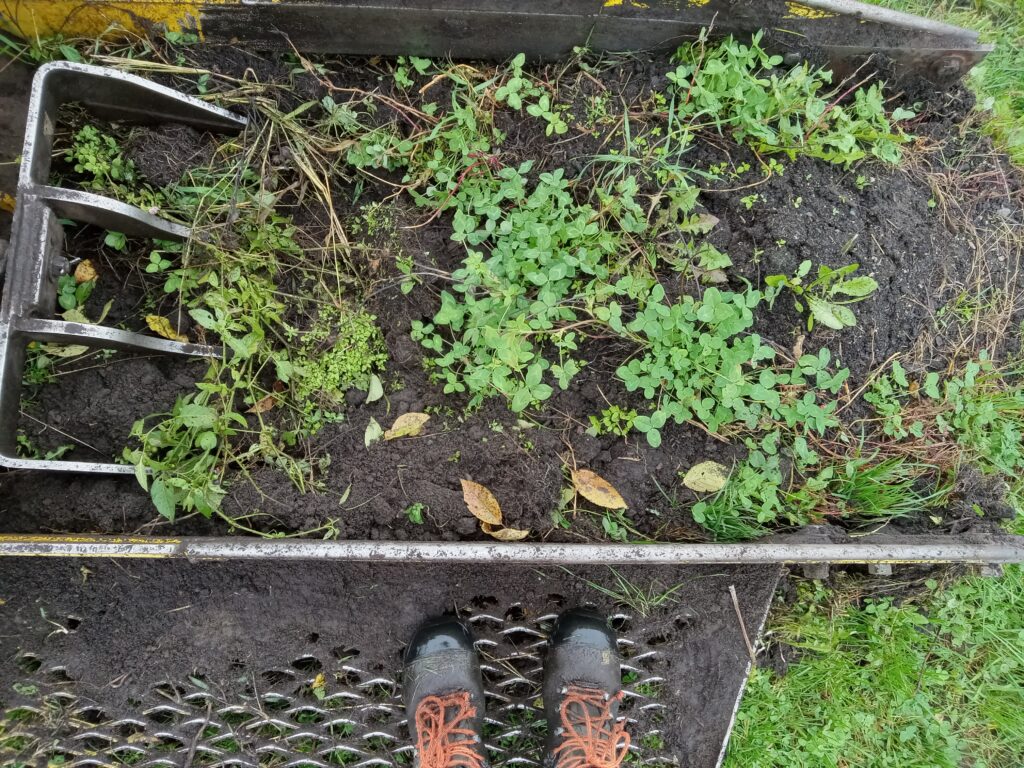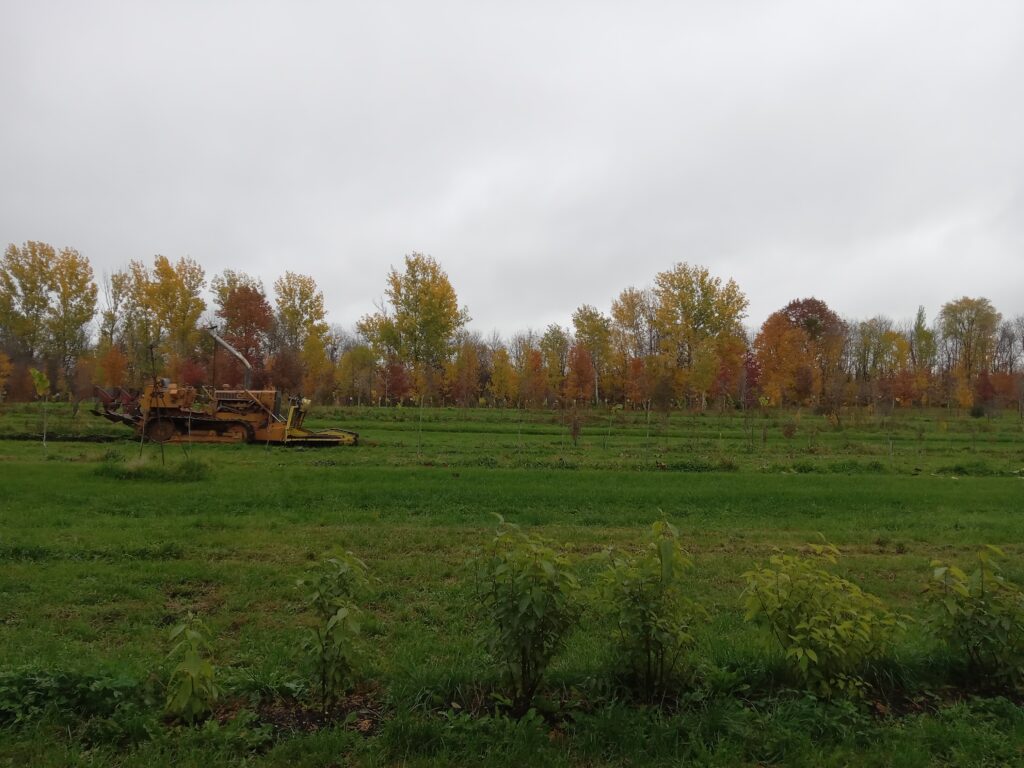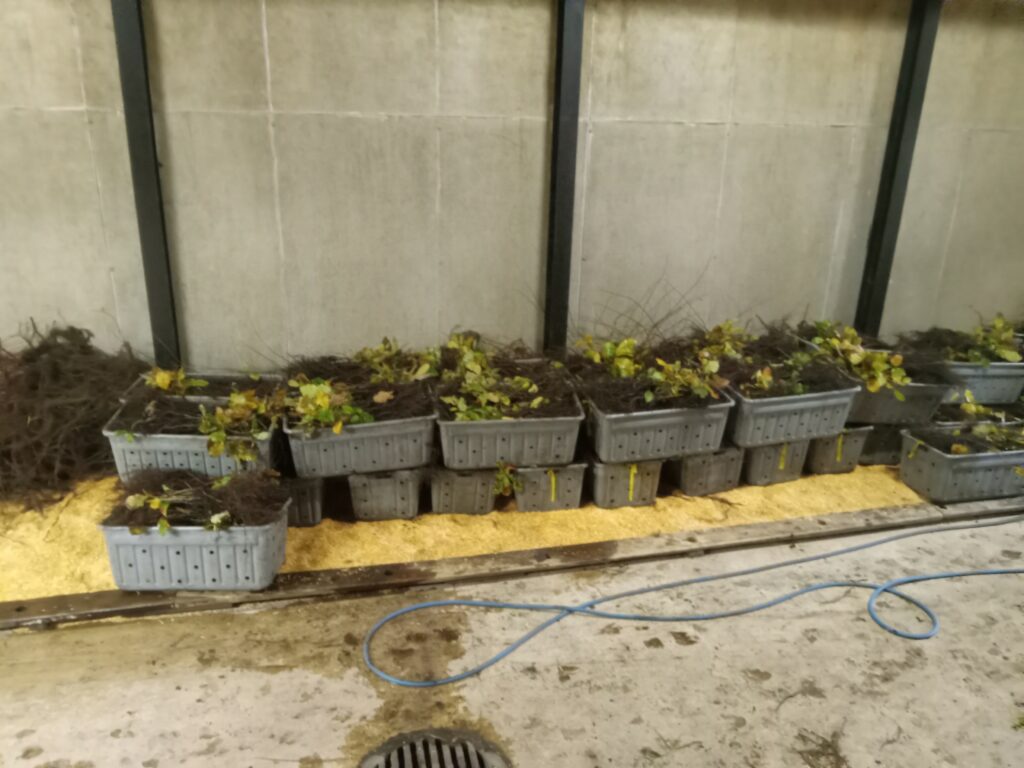Fall Tree Harvest

By Karolyn Preiss, Three Rivers 3 Field Crew Member / AmeriCorps Member
The end of October and early November, marks the harvest at the Three Rivers Nursery.
The Nursery specializes in trees–seedlings, saplings, and donation trees–but they also grow a few other plants onsite that can be used for undergrowth projects, etc.
This past week, Conservation Corps Crews were able to assist in the Nursery’s harvest. After months of weeding the tree beds, it was time to take the young plants from the earth and protect them from the ravages of Minnesota winter by placing them into the onsite cooler for overwintering.

There are a few different ways that this is accomplished. For instance, seedlings and saplings are uprooted using two different types of machine.
Seedlings are smaller and more delicate. They are also more numerous in the seed bed, so harvesting would be very time consuming if volunteers wanted to pick them or dig them by hand. Because the Nursery has so many seedlings, a tractor with an attachment is utilized.

The attachment is essentially a large vibrating rake that is dragged below the soil thus lifting both dirt and seedlings from the bed. The vibration of the rake shakes the soil free from the seedling roots and drops the seedlings back on the ground where they can be collected and put into large bins.
Another attachment is used for saplings. This one is pushed in front of a work vehicle. It, too, is reminiscent of a giant rake but with a large, semi-rounded shovel on its nose. It goes beneath the soil, like the one utilized for seedlings, scooping up root systems as it collects trees one at a time.
While volunteers are able to walk behind the tractor and collect seedlings leisurely as they are deposited on the earth–troubleshooting if plants get stuck on the prongs of the rake as necessary–saplings need a more hands-on approach.
To harvest saplings, volunteers flank the front of the work vehicle. Two individuals have standing room directly above the attachment on metal wings that are propelled forward with the scoop. These volunteers are in charge of grasping the trees as they are lifted and shaken per the vibrating rake. Once all the soil has been shaken free, any residual weeds can be removed and the trees are handed off to two or more other volunteers–“runners”–who place the trees out of the way, ready for the next destination.

Saplings have more dynamic root systems than seedlings, and untangling them from the earth can take time. Upon experimentation, it was determined that using hands to dislodge large chunks of turf as they accumulated offered more protection for tree roots and more control for the volunteer versus utilizing a shovel as the shovel could not always penetrate the mat of interconnected grass roots and weeds. The shovel was also more likely to damage the roots of the plant as it scraped by. If turf was allowed to accumulate, it would block more of the rake and keep other soil and weeds from falling between the rake prongs. By separating it into smaller chunks or removing it from the rake entirely, turf was not able to accumulate so readily, making it easier to free the sapling from the earth. Additional plant matter at the roots of the sapling can add weight to the load and can also damage roots as the tree is jostled by the vibrating rake in combination with the pulls from volunteers. Eventually, though, the sapling is generally dislodged and the process continues.
In juxtaposition to seedlings and saplings, donation trees stay in the earth during the winter. Their size and the spread of their root systems provide protection from the wind and the snow, so they are able to remain in their summer homes year-round. However, they, too, can be harvested. In this circumstance, a third machine is used: a giant tree spade. It is attached to the back of a work vehicle. The spade is comprised of a giant, metal ring that surrounds the tree. Hidden within the ring are large leaves or blades that cut down into the earth at an angle, forming a cone in which the tree and its root systems are captured. Once the tree is surrounded and the blades are in place, the ring is lifted and the tree is thus harvested.

The Nursery holds between 35,000 and 50,000+ trees in its many beds each year, seedlings, saplings, and donation trees, alike.
While weeding for each one this past spring and summer could have been–upon honest recollection–a bit tedious and/or monotonous at times, it was well worth it to see the many trees being piled up for storage come fall.

Each one will be replanted in the soil next year thus healing the earth in the name of Conservation.
What a pleasure it has been to learn and grow with the Three Rivers Nursery and with the Conservation Corps over these past nine months. For those interested in a similar experience, check out www.conservationcorps.org and/or www.threeriversparks.org.
It’s worth the journey.